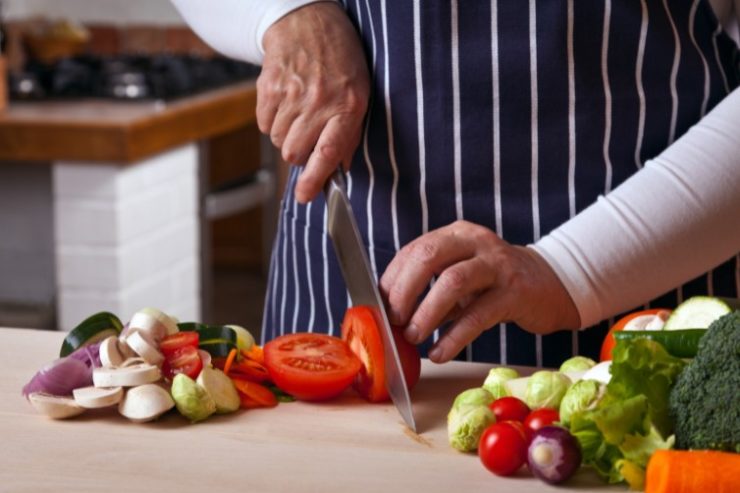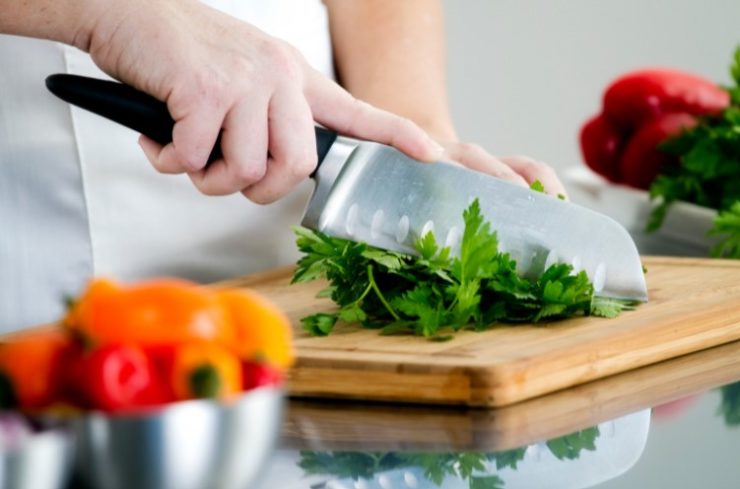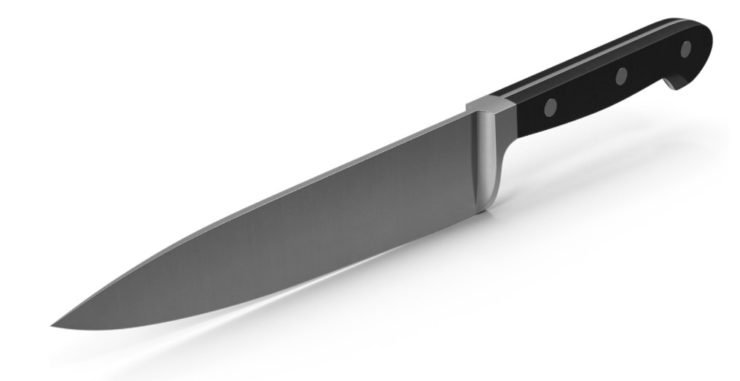Take a look at any chef’s knife. It’s fairly easy to identify the material that it’s made from, how long the blade is, and how sharp it’s likely to be. And with a little practice, you’ll be able to tell whether the handle would be comfortable for you.
But there’s one “hidden” element to every kitchen knife: Its balance. What makes for a balanced knife? And how can you tell if a knife isn’t balanced for your cutting style?
That’s what I’m here today to share with you. With a decade of experience using kitchen knives and a few years of bladesmithing, I hope to demystify this sometimes-confusing topic for you.
We’ll cover why knife balance matters, how to tell if your knife is balanced, and things to look for in a knife’s construction. By the end, you should have a clearer idea of what sort of knife balance is best for your cooking style.
In This Article
Why Does Knife Balance Matter?

Knife balance is a matter of both comfort and dexterity.
Use a well-balanced knife, and you’ll be able to cut for an hour without any wrist or hand discomfort. You’ll also find handling the knife to be easier, making it simple to make precise cuts.
Use a poorly-balanced knife, though, and you’ll find the opposite. You’ll develop pressure points on your hands or wrists that will get more painful with prolonged use. And you’ll find it awkward to make delicate or precise cuts.
In short: It’s important to have a well-balanced knife because it will make your kitchen prep time easier and more enjoyable.
Finding Your Knife’s Balance Point
Here’s the kicker though: There is no “gold standard” for knife balance. Depending on the type of knife you’re using, its balance point will differ.
For the sake of this explanation, let’s use the most common kitchen knife — a chef’s knife. Then in the next section, we’ll look at a few types of knives that might benefit from a different balance.
A majority of high-quality chef’s knives are made to balance around the butt of the blade. This is because both Western and Eastern cutting styles use a pinch grip for better control. It makes sense, then, that you would want your knife balanced at the point where you’ll be gripping it.
You can test whether your chef’s knife is balanced by extending your index finger and balancing the knife like a teeter-totter. If it’s balanced as just described, you should be able to find its balance point directly past the bolster at the butt of the blade.
If it tips towards the handle, your knife is handle-heavy. Some chefs prefer this type of knife balance when working with soft and delicate ingredients. Chopping shallots or scallions is a good example, as these don’t require much force to cut.
If it tips towards the blade, your knife is blade-heavy. Cooks who work with large cuts of meat may prefer this type of chef knife, as its heavier blade provides more leverage for tougher cuts.
Do Technique and Grip Change How A Knife Should Be Balanced?

Technique and grip are less important for balance than the type of knife you’re using. This assumes that you’ve learned the basics of how to hold a knife safely, using your forefinger and thumb to grip just past the bolster for more control.
Cleavers are the best example of this. You absolutely do not want a cleaver to be balanced near the bolster. They should always be blade-heavy to provide more cutting power and greater durability.
The long, thin filet knife almost always requires a handle-heavy design. Their flexible blades are made to be drawn through fish or meat, not to be used with a chopping motion. So a handle-heavy design allows for more control of your long cuts.
How Does Construction Affect Knife Balance?
The materials and construction processes used for a knife determine its balance.
If a knife’s blade is thicker and heavier, this will lead to a blade-heavy design. But if the handle is made of thick hardwood, it may be able to return to a center balance.
Similarly, a lightweight plastic handle can make a knife blade-heavy. You’ll find this quite often in less expensive knives, where plastic is used because it’s the cheapest handle material.
Lastly, consider your knife’s bolster. Does it have a full bolster, half bolster, or no bolster at all? A knifemaker’s choice of bolster will change the knife’s balance. Full bolsters will emphasize a center balance, while no bolster designs will de-emphasize center balance.
What Is A Perfectly Balanced Knife?
Determining your ideal knife balance comes down to a process of trial and error. Because each chef’s hands are different, the perfect balance will also be slightly different.
That said, it’s often helpful to start from a point of center balance. Knives that are balanced right around the butt of the blade tend to fit the largest variety of chefs. And if that’s not a great fit for you, it will be obvious in the way the knife feels.
Once you have found your ideal knife balance, it will make your time in the kitchen that much more productive and enjoyable. If you’re having trouble finding a balanced knife, feel free to drop me a line — I’d be happy to help walk you through a few example knives! Or take a look at some of my favorite kitchen knives to get a head start.







